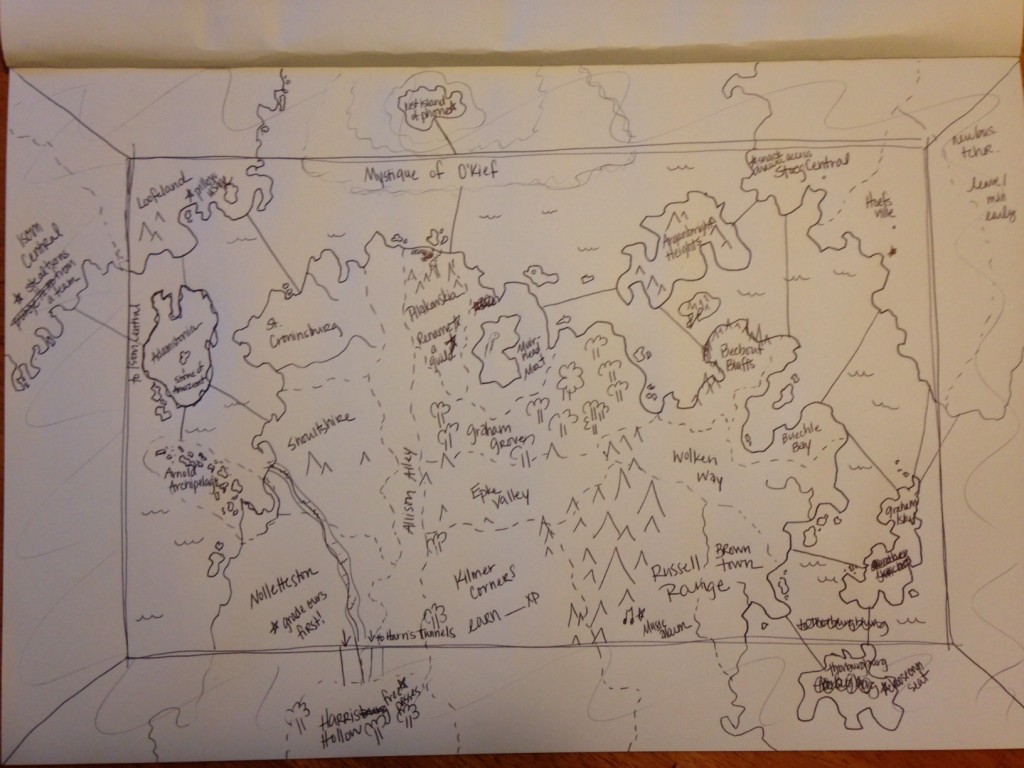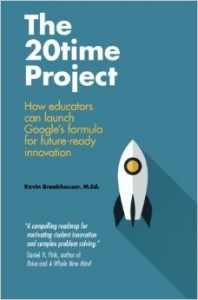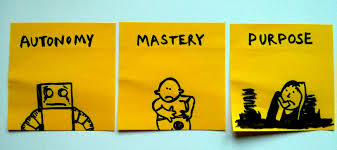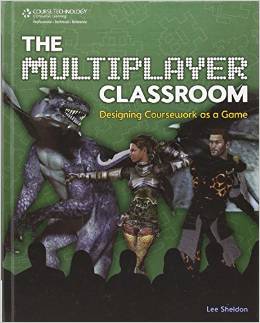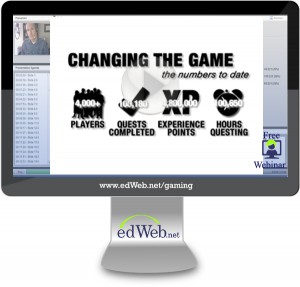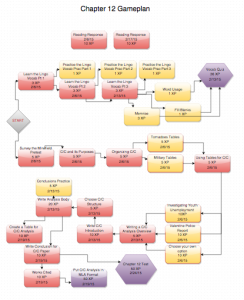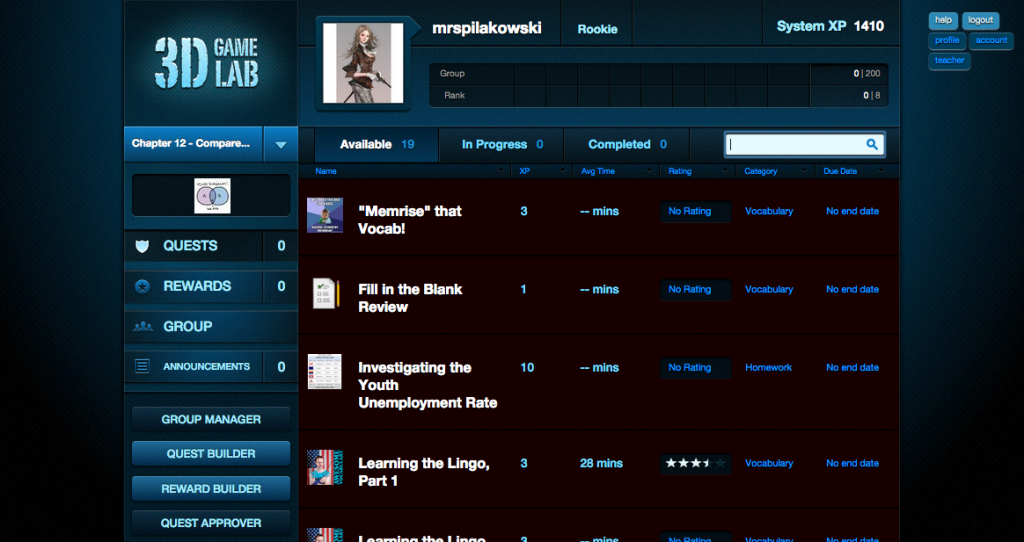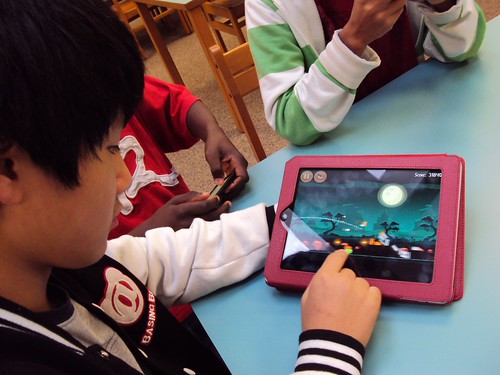This year I’m bringing a Medieval Fantasy-type theme to my classroom–think Game of Thrones crossed with the boardgame Risk. In my journal, I played with a VERY rough sketch of a map of the Land of Badgeria (our mascot is the badger). (Also, the name is tentative until/unless I conjure up a better name.)
Tonight, I drafted a second map, testing out my map-making skills. I can’t draw anything realistic, but turns out I’m not bad at making fake maps. There are still mess-ups and scratch outs, but I started it with the thought of another “rough draft” in mind. I knew this wouldn’t be the final one.
The object of our game will be to “conquer” the Land of Badgeria, which is accomplished through a process similar to the boardgame Risk. Every few weeks, we’ll have a Royal Rumble, where guilds will challenge each other (via dice like in the Risk game) for countries. Guilds will earn “challenge rights” through their average level (if their members’ average level is 3, then they will have 3 challenges), as well as through the Royal Rumble, where they practice ACT questions and compete against their own previous scores. Any score improving on or maintaining their previous score earns them another challenge.
For each challenge, a guild can challenge the right to own another “country.” Both guilds roll the dice, and the higher one wins. However, some countries also come with special privileges, such as the right to use the pillows or access to the snack drawer.
There are a few highlights to the map. My students will notice that the countries are named after teachers at our school. My country is “Pilakowskia;” others include the “Arnold Archipelago,” “Loofeland,” “Arganbright Heights,” “Muirhead Moat,” and perhaps my favorite, “Thorberg-burg.”
Also, you’ll notice a transparent frame around the border. That’s because not all countries will be visible at the beginning of the school year. More countries–and privileges–will be available as the year progresses based on student achievement and responsibility. If I feel students are ready to handle more responsibility, part of the frame will come off, revealing the hidden lands underneath. (The final frame won’t be transparent, but students will see lines and notations indicating that there are “secrets” hiding beneath.)
I’m still uncertain about a few things.
1) Will I create a final draft of this on my own? Or will I commission a student of mine to create it for me? I have one in mind who would blow my skills out of the water, and she’d add tons of creativity…but then she will know my secrets, too.
2) I’m deciding how to reveal the map. I could simply have it hanging the first day and create intrigue. However, I could also embed it as an Easter egg somewhere in the first week of curriculum, and award an extra challenge or XP to the guild who “finds” the map (maybe I will hide it somewhere in our school, and give clues to students as they complete assignments?)
What’s most important for me to remember, though, that this is a process. I won’t have a pretty, perfectly organized and polished game this year. (In fact, that won’t ever happen.) I can’t burn myself out early on aiming for perfection. I need to have fun with it while not getting overwhelmed, as I’m wont to do.
